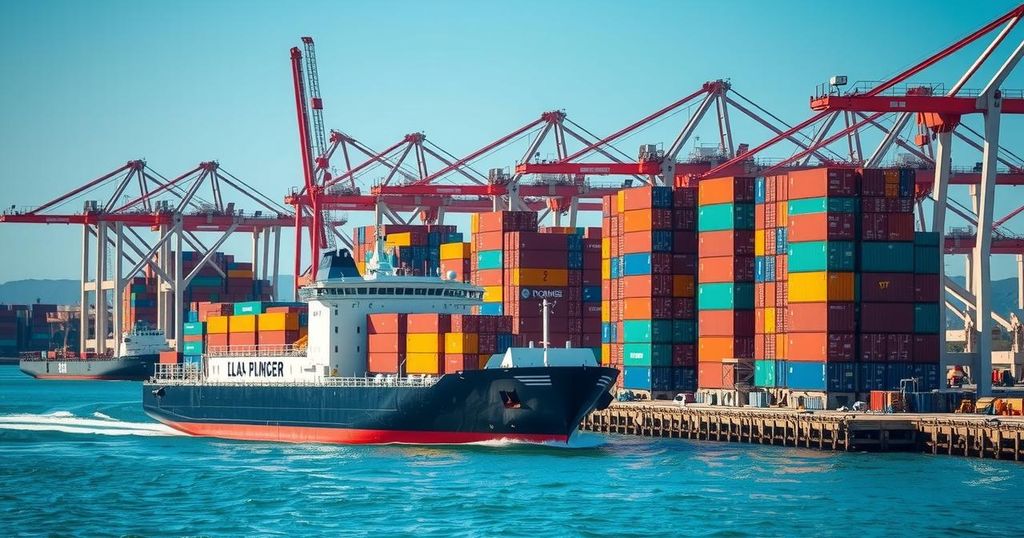China’s Medog County Mega-Dam: Implications for India and Bangladesh
China plans to build a mega-dam in Medog County, potentially disrupting water flow to India and Bangladesh. This project may drastically affect agriculture and daily water supply for both countries. Urgent regional cooperation and legally binding agreements are essential to mitigate risks, ensure equitable water distribution, and address ecological concerns.
China intends to construct the Medog County dam, which would surpass the Three Gorges Dam as the largest hydroelectric project globally. The Yarlung Tsangpo River, originating from Tibet, flows into India as the Brahmaputra River and further into Bangladesh as the Jamuna. This initiative has raised significant concerns among downstream countries, notably India and Bangladesh, regarding potential alterations to water flow that would impact millions reliant on these waterways for agriculture and daily consumption.
The proposed dam is projected to generate 60 gigawatts (GW) of power and is estimated to cost around $137 billion. Chinese officials assert that the project aims to leverage Tibet’s hydropower while addressing energy needs and achieving carbon neutrality by 2060. The diversion or control of the Brahmaputra’s flow could severely disrupt the hydrological stability crucial for India’s northeastern states, jeopardizing the livelihoods of approximately 130 million people and six million hectares of farmland.
For Bangladesh, the Brahmaputra transforms into the Jamuna River, vital for over 160 million inhabitants. The country heavily relies on the river to meet 55 percent of its irrigation requirements and supports drinking water and fisheries. Reports indicate that any reduction in river flow from China’s dam, especially during the dry months, could substantially decrease crop yields and heighten salinity intrusion, exacerbating food insecurity and potential migration issues.
The ecological risks tied to the Medog dam production are considerable, particularly in the seismically active Himalayan region where landslides and earthquakes are concerns. The Yarlung Tsangpo Basin’s sensitive ecosystem could face disruptions due to significant infrastructure. Studies indicate that such dams alter sediment transport, negatively influencing riverbed stability and aquatic life, including economically vital fish species.
In response to China’s unilateral construction of the Medog dam, India and Bangladesh must advocate for legally binding agreements on water sharing. The absence of a comprehensive treaty among these nations only intensifies existing geopolitical tensions. Although China has provided some hydrological data to both India and Bangladesh since the late 2000s, experts assert that these measures are inadequate to avert potential conflicts over water resources.
India has proposed the development of the Lower Siang Dam as a countermeasure to regulate the Brahmaputra’s flow; however, this initiative faces local opposition and environmental concerns, leading to delays. Bangladesh, meanwhile, relies on regional cooperation for water management. Experts recommend the establishment of a trilateral agreement among China, India, and Bangladesh to foster sustainable river management and conflict resolution.
The Medog dam presents risks concerning water shortages, agricultural decline, and environmental challenges, necessitating immediate regional dialogue. Strong advocacy for binding water-sharing agreements is essential to achieve transparent and equitable distribution. Furthermore, international mediation may be beneficial, especially under frameworks like the UN Water Convention of 1997, to assist in dispute resolution. In light of climate change’s impact on water security, South Asia must prioritize sustainable practices to mitigate conflicts over this crucial resource.
The Medog County dam in China represents a significant infrastructure development project that has critical implications for neighboring countries, particularly India and Bangladesh. With the Yarlung Tsangpo River impacting agricultural and daily water supply needs, the construction of the world’s largest dam raises serious concerns about potential changes in water distribution. Understanding the hydrological dynamics and ecological ramifications is vital for assessing the project’s regional impact.
In conclusion, the proposed Medog dam in China poses formidable challenges for India and Bangladesh concerning water security, agricultural stability, and environmental integrity. The construction compels urgent dialogue for legally binding water-sharing agreements among these nations. Collaborative efforts, including international mediation, are imperative to address the potential for disputes, especially as climate change exacerbates existing tensions around water resources.
Original Source: www.lowyinstitute.org








Post Comment